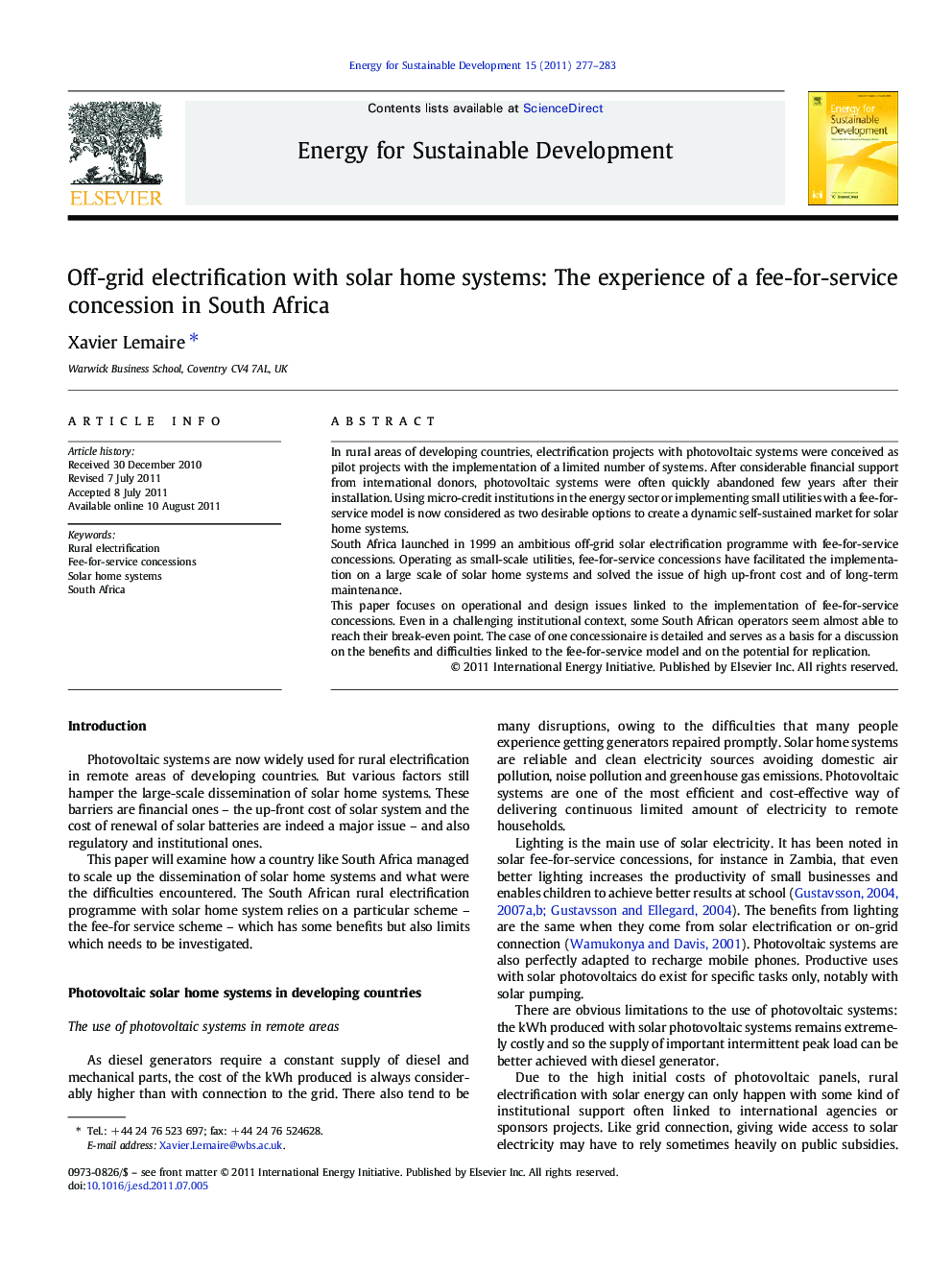| Article ID | Journal | Published Year | Pages | File Type |
|---|---|---|---|---|
| 1047003 | Energy for Sustainable Development | 2011 | 7 Pages |
In rural areas of developing countries, electrification projects with photovoltaic systems were conceived as pilot projects with the implementation of a limited number of systems. After considerable financial support from international donors, photovoltaic systems were often quickly abandoned few years after their installation. Using micro-credit institutions in the energy sector or implementing small utilities with a fee-for-service model is now considered as two desirable options to create a dynamic self-sustained market for solar home systems.South Africa launched in 1999 an ambitious off-grid solar electrification programme with fee-for-service concessions. Operating as small-scale utilities, fee-for-service concessions have facilitated the implementation on a large scale of solar home systems and solved the issue of high up-front cost and of long-term maintenance.This paper focuses on operational and design issues linked to the implementation of fee-for-service concessions. Even in a challenging institutional context, some South African operators seem almost able to reach their break-even point. The case of one concessionaire is detailed and serves as a basis for a discussion on the benefits and difficulties linked to the fee-for-service model and on the potential for replication.
►In 1999, South Africa launched an ambitious solar electrification programme. ►The experience of a fee-for-service concession is related. ►An unstable institutional framework has created uncertainties for local operators. ►Fee-for-service companies can cover maintenance and operating costs. ►Fee-for-service companies need capital subsidies to expand their business.
